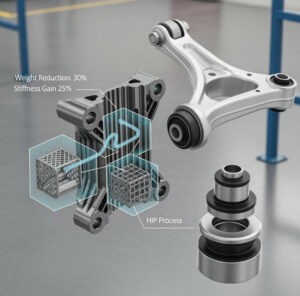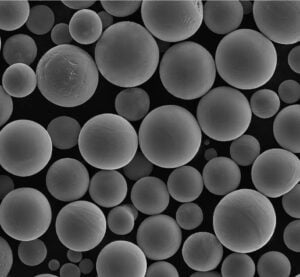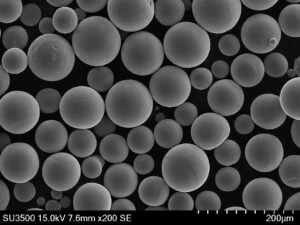High-Strength Steel 3D Printing in Munich: A Complete Guide for B2B Buyers
Table of Contents
1. Introduction to High-Strength Steel 3D Printing
What is High-Strength Steel 3D Printing?
High-strength steel 3D printing is a cutting-edge manufacturing technology that enables businesses to create complex, durable, and lightweight steel components with superior mechanical properties. Using advanced additive manufacturing (AM) techniques like Selective Laser Melting (SLM) and Electron Beam Melting (EBM), companies can produce highly precise industrial parts that outperform traditional manufacturing methods.
Industries That Benefit from High-Strength Steel 3D Printing
High-strength steel 3D printing is widely adopted in various industries, including:
- Aerospace & Defense – Lightweight, high-performance components for aircraft and military applications.
- Automotive & Transportation – Strong, wear-resistant parts for high-performance vehicles.
- Medical & Healthcare – Custom implants and surgical tools with superior biocompatibility.
- Industrial & Manufacturing – Durable tooling and machine components with extended lifespan.
- Oil & Gas – Corrosion-resistant parts for extreme environments.
Advantages of High-Strength Steel 3D Printing
| Benefit | Description |
|---|---|
| Superior Strength | High-strength steel offers excellent tensile strength and durability. |
| Complex Geometries | 3D printing allows for intricate designs that cannot be achieved with traditional methods. |
| Lightweight Parts | Optimized structures reduce weight without compromising strength. |
| Reduced Waste | Additive manufacturing minimizes material wastage. |
| Customization | Tailor-made components for specific applications. |
With the growing demand for efficient, cost-effective, and sustainable manufacturing solutions, high-strength steel 3D printing is becoming a preferred choice for businesses in Munich and beyond.
2. Market Trends & Growth Potential in Munich
Growing Demand for Metal 3D Printing in Germany
Germany has established itself as a global leader in additive manufacturing, with Munich emerging as a key hub for high-strength steel 3D printing. The demand is fueled by:
- Advancements in AM Technologies – Improvements in powder bed fusion techniques are enhancing the strength and quality of 3D-printed steel.
- Sustainability Goals – Companies are adopting 3D printing to reduce waste and energy consumption.
- Increased Adoption in Aerospace & Automotive – German automotive and aerospace industries are leveraging 3D printing for high-performance parts.
Market Growth Statistics
The metal 3D printing market in Germany is expected to grow at a CAGR of 25% from 2024 to 2030, with high-strength steel accounting for a significant share.
| Market Factor | Impact on Growth |
|---|---|
| Government Initiatives | Increased funding for additive manufacturing research. |
| R&D Investments | Leading firms are investing in new materials and processes. |
| Adoption by SMEs | More small and medium enterprises (SMEs) are integrating 3D printing into production. |
Key Players Driving the Market
Several industry leaders and research institutions in Munich are contributing to the rapid expansion of high-strength steel 3D printing. Companies like Siemens, BMW, and Airbus are investing in additive manufacturing innovations to enhance efficiency and performance.
For businesses looking to adopt high-strength steel 3D printing in Munich, understanding the supplier landscape is crucial.
3. Key Factors to Consider When Choosing a High-Strength Steel 3D Printing Supplier
Selecting the right supplier for high-strength steel 3D printing can significantly impact the quality, cost, and efficiency of your production. Here are the key factors B2B buyers should consider:
1. Material Quality & Powder Properties
The quality of the metal powder used in 3D printing affects the final product’s strength, density, and mechanical properties. Metal3DP offers top-tier gas atomized and PREP-produced steel powders with excellent flowability and minimal impurities.
2. Printing Technology & Capabilities
Different 3D printing technologies yield varying results. Ensure the supplier uses:
- Selective Laser Melting (SLM) – Ideal for high-precision applications.
- Electron Beam Melting (EBM) – Suitable for high-performance aerospace and medical applications.
3. Industry Certifications & Compliance
A reputable supplier should have certifications such as:
- ISO 9001 (Quality Management)
- AS9100 (Aerospace Industry Standards)
- ISO 13485 (Medical Device Manufacturing)
4. Production Speed & Scalability
For businesses requiring large-scale production, it’s essential to assess the supplier’s capacity. Look for:
- Batch production capabilities
- Fast turnaround times
- On-demand manufacturing services
5. Cost & Value Proposition
While cost is a consideration, it should not compromise quality. Evaluate:
- Material and production costs
- Post-processing and finishing expenses
- Long-term savings from durability and efficiency
6. Customer Support & Technical Expertise
A reliable supplier should offer:
- Expert consulting on material selection
- Design optimization services
- After-sales support and troubleshooting
| Factor | Why It Matters |
|---|---|
| Material Quality | Ensures strength, durability, and performance. |
| Technology Used | Determines precision and efficiency. |
| Certifications | Guarantees compliance with industry standards. |
| Production Speed | Impacts lead time and scalability. |
| Cost & Value | Balances affordability and quality. |
| Customer Support | Provides guidance and reliability. |
By carefully evaluating these factors, businesses can secure a high-quality, cost-effective supplier for high-strength steel 3D printing in Munich.

4. Top 5 High-Strength Steel 3D Printing Suppliers in Munich
For businesses seeking high-strength steel 3D printing in Munich, it’s essential to collaborate with trusted suppliers that offer advanced additive manufacturing capabilities. Below are the top 5 suppliers in Munich that specialize in metal 3D printing for industrial applications.
1. EOS GmbH
Overview: EOS is a global leader in industrial 3D printing, offering high-strength steel solutions for aerospace, automotive, and medical applications.
| Feature | Details |
|---|---|
| Technology | Direct Metal Laser Sintering (DMLS) |
| Materials | Stainless steel, tool steel, and high-strength alloys |
| Industries Served | Aerospace, automotive, medical |
| Certifications | ISO 9001, AS9100 |
2. Siemens Additive Manufacturing
Overview: Siemens operates a state-of-the-art metal 3D printing facility in Munich, focusing on industrial applications for high-performance steel components.
| Feature | Details |
|---|---|
| Technology | Laser Powder Bed Fusion (LPBF) |
| Materials | High-strength stainless steel, Inconel, superalloys |
| Industries Served | Energy, transportation, industrial manufacturing |
| Certifications | ISO 13485, ISO 9100 |
3. Fraunhofer IGCV
Overview: As a leading research institute, Fraunhofer IGCV provides customized metal 3D printing solutions for industrial applications.
| Feature | Details |
|---|---|
| Technology | Selective Laser Melting (SLM), Binder Jetting |
| Materials | High-strength steel, tool steel, titanium |
| Industries Served | Research, aerospace, medical |
| Certifications | ISO 9001 |
4. FIT Additive Manufacturing Group
Overview: FIT specializes in rapid prototyping and serial production using high-strength metals.
| Feature | Details |
|---|---|
| Technology | Electron Beam Melting (EBM), SLM |
| Materials | Tool steel, stainless steel, CoCr alloys |
| Industries Served | Automotive, aviation, medical |
| Certifications | ISO 9100, AS9100 |
5. APWORKS (An Airbus Company)
Overview: APWORKS focuses on lightweight, high-strength metal components for aerospace and defense.
| Feature | Details |
|---|---|
| Technology | Laser Powder Bed Fusion (LPBF) |
| Materials | High-strength steel, aluminum alloys, titanium |
| Industries Served | Aerospace, military, automotive |
| Certifications | ISO 9100 |
These top-tier suppliers provide high-strength steel 3D printing solutions that cater to various industries, ensuring quality, precision, and scalability.
5. Why More Businesses Are Choosing Additive Manufacturing for High-Strength Steel
1. Enhanced Design Freedom
Traditional manufacturing methods limit the complexity of parts due to machining constraints. With 3D printing, businesses can create lightweight, optimized designs that improve performance.
2. Superior Material Efficiency
Additive manufacturing uses only the required amount of high-strength steel powder, reducing material waste by up to 70% compared to subtractive methods.
3. Rapid Prototyping & Faster Production
Unlike traditional casting or machining, metal 3D printing enables:
- Quick design iterations
- Faster time-to-market
- On-demand manufacturing
| Manufacturing Method | Lead Time | Material Waste | Complexity of Parts |
|---|---|---|---|
| Traditional Machining | 4-6 weeks | High | Limited |
| Casting | 6-8 weeks | Moderate | Moderate |
| 3D Printing | 1-2 weeks | Low | High |
4. Improved Mechanical Properties
High-strength steel 3D printing produces parts with:
- High tensile strength
- Excellent fatigue resistance
- Superior heat and corrosion resistance
5. Cost-Effective for Low-Volume Production
For low-to-medium batch sizes, 3D printing significantly reduces tooling costs, making it an affordable alternative to traditional manufacturing.
With these advantages, it’s no surprise that companies in Munich are turning to additive manufacturing for high-strength steel applications.
6. Why Choose Metal3DP for High-Strength Steel 3D Printing?
Metal3DP is a leading provider of industrial 3D printing solutions specializing in high-performance metal powders and advanced additive manufacturing technologies.
1. Industry-Leading Printing Technologies
Metal3DP utilizes advanced Selective Electron Beam Melting (SEBM) and Selective Laser Melting (SLM) to produce high-precision, high-strength steel components.
2. High-Quality Metal Powders
Our gas atomized and PREP-produced powders offer:
- High sphericity
- Excellent flowability
- Minimal impurities
🔗 Learn more about Metal3DP’s metal powder solutions.
3. Expertise in Multiple Industries
We provide customized 3D printing solutions for:
- Aerospace & Defense
- Medical & Healthcare
- Automotive & Industrial Manufacturing
4. Certified & Reliable Manufacturing
Metal3DP follows strict quality standards, ensuring compliance with:
- ISO 9001 (Quality Management)
- AS9100 (Aerospace Standards)
5. Competitive Pricing & Scalability
We offer:
✅ Cost-effective solutions for low-to-mid volume production
✅ Scalable manufacturing capabilities for large-scale projects
6. Global Supply & Fast Delivery
With a strong logistics network, we deliver high-strength steel components to businesses in Munich and across Europe.
🔗 Discover Metal3DP’s advanced 3D printing solutions.
7. How to Order High-Strength Steel 3D Printing Services in Munich
For businesses looking to incorporate high-strength steel 3D printing into their production process, understanding the ordering workflow is essential. Below is a step-by-step guide on how to order additive manufacturing services from Metal3DP.
Step 1: Define Your Project Requirements
Before placing an order, businesses should evaluate the following:
✔ Part Design – Do you have a 3D CAD model or need design assistance?
✔ Material Selection – Which high-strength steel alloy best suits your application?
✔ Quantity & Production Volume – Are you ordering a prototype, small batch, or mass production?
✔ Post-Processing Needs – Do you require heat treatment, polishing, or surface finishing?
Step 2: Request a Quote from Metal3DP
Once your project requirements are clear, you can request a customized quote from Metal3DP.
🔗 Submit your request via our inquiry form here: Contact Metal3DP
| Information to Provide | Why It’s Needed |
|---|---|
| 3D CAD File (STL, STEP, IGES) | Allows precise cost estimation and feasibility analysis |
| Material Preferences | Helps determine the best high-strength steel powder |
| Quantity & Lead Time | Ensures efficient production scheduling |
| Post-Processing Requirements | Defines additional finishing processes needed |
Step 3: Design Optimization & Feasibility Analysis
If necessary, Metal3DP’s engineering team can assist with:
✔ Design for Additive Manufacturing (DfAM) – Optimizing part geometry for better strength and weight reduction
✔ Material & Process Selection – Ensuring the best metal powder and printing method are used
✔ Cost Optimization – Reducing unnecessary material usage without compromising quality
Step 4: Production & Quality Assurance
Once the design is finalized, Metal3DP initiates the 3D printing process using advanced Selective Electron Beam Melting (SEBM) or Selective Laser Melting (SLM).
✔ High-precision metal printing with tight tolerances
✔ In-line quality control to ensure mechanical strength & accuracy
✔ Post-processing services like heat treatments, machining, and polishing
🔗 Learn more about our printing methods for high-strength steel.
Step 5: Delivery & Logistics
Metal3DP offers global shipping with fast turnaround times for businesses in Munich and across Europe.
✔ Secure packaging to protect parts
✔ On-time delivery with reliable logistics partners
✔ Continuous support after delivery
This streamlined process ensures that businesses receive high-quality, high-strength steel components efficiently.
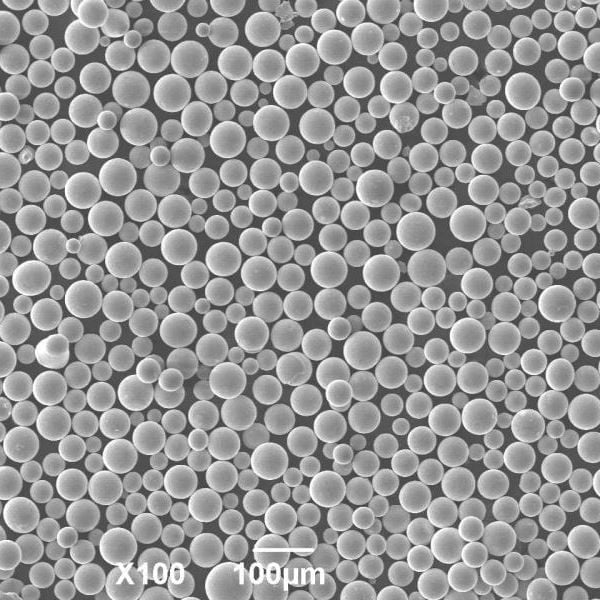
8. FAQs: Common Questions About High-Strength Steel 3D Printing
1. What types of high-strength steel can be 3D printed?
Metal3DP specializes in various high-strength steels, including:
✔ Stainless Steel 316L – Corrosion-resistant and durable
✔ Maraging Steel – High-strength with excellent toughness
✔ Tool Steels (H13, D2, M300) – Used for dies, molds, and high-wear applications
2. How does 3D printing compare to traditional steel manufacturing?
| Feature | 3D Printing | Traditional Machining |
|---|---|---|
| Lead Time | 1-2 weeks | 4-6 weeks |
| Material Waste | Minimal | High |
| Complex Geometries | Possible | Limited |
| Customization | Highly flexible | Costly for small batches |
3D printing allows for faster production, reduced waste, and more design flexibility compared to machining or casting.
3. What industries benefit most from high-strength steel 3D printing?
✔ Aerospace & Defense – Lightweight, high-strength parts for aircraft.
✔ Automotive & Motorsports – Durable engine components and custom parts.
✔ Medical & Healthcare – Custom implants and surgical tools.
✔ Energy & Oil & Gas – Corrosion-resistant components for extreme environments.
4. How durable are 3D-printed steel parts?
3D-printed high-strength steel parts exhibit:
✔ High tensile strength
✔ Excellent fatigue resistance
✔ Superior heat and corrosion resistance
Proper heat treatment and post-processing enhance mechanical properties to match or exceed traditionally manufactured steel.
5. Can Metal3DP handle large-scale production?
Yes! Metal3DP offers batch and serial production for businesses requiring high-volume additive manufacturing.
✔ Scalable production capacity
✔ Consistent part quality across batches
✔ Competitive pricing for bulk orders
🔗 Explore our metal 3D printing solutions for industrial-scale production.
9. Conclusion & Next Steps
Why Choose High-Strength Steel 3D Printing in Munich?
✔ Faster production times for industrial parts.
✔ Enhanced design flexibility for complex geometries.
✔ Reduced material waste compared to machining.
✔ Strong, lightweight components for demanding applications.
Why Choose Metal3DP?
✅ Industry-leading expertise in metal additive manufacturing.
✅ High-quality metal powders optimized for SLM & SEBM printing.
✅ Certified manufacturing with ISO 9001 and AS9100 standards.
✅ Competitive pricing & scalable production for B2B buyers.
Get started today! Request a quote from Metal3DP to explore high-strength steel 3D printing solutions.
Share On
MET3DP Technology Co., LTD is a leading provider of additive manufacturing solutions headquartered in Qingdao, China. Our company specializes in 3D printing equipment and high-performance metal powders for industrial applications.
Inquiry to get best price and customized Solution for your business!
Related Articles
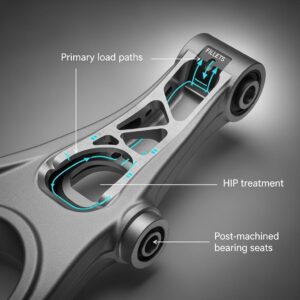
Metal 3D Printing for U.S. Automotive Lightweight Structural Brackets and Suspension Components
Read More »About Met3DP
Recent Update
Our Product
CONTACT US
Any questions? Send us message now! We’ll serve your request with a whole team after receiving your message.







